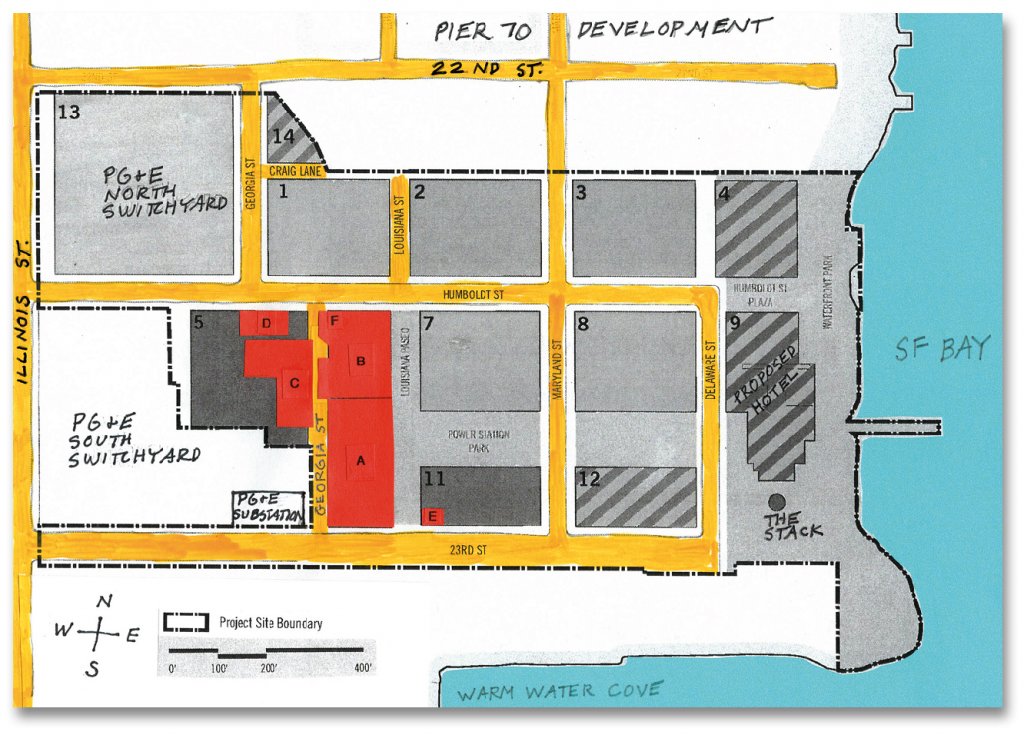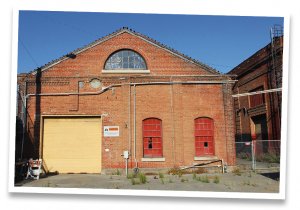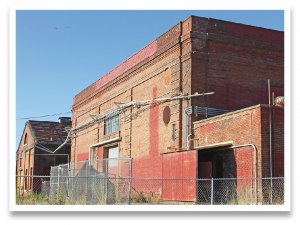
A) Station A, south portion; B) Station A, north portion; C) Gas Compressor Shop; D) Gas Meter Shop; E) Gatehouse; F) Station A’s Machine Shop Facade
Four early-20th Century brick buildings at the former site of the Potrero Power Plant are all that’s left of what was a center of industrial growth in San Francisco between 1870 and 1940, a period during which, according to Dr. Paul Groth, efficiency and productivity became a national religion. The buildings housed early Pacific Gas and Electric Company activities, played a role in rebuilding the City after the 1906 earthquake and fire, and are central to Pier 70’s history. The future of these brick buildings is uncertain, subject to the San Francisco Planning Commission’s approval of Associate Capital’s proposed development plans for the site.
The structures have significant problems, and are “Red Tagged;” the public isn’t allowed to enter them. Nearly half of Station A was torn down in 1983, compromising structural integrity. It, as well as the Gas Meter Shop and Gas Compressor Building, has been without roofs since 2001. The structures’ owner, Associate Capital, has found brick and mortar deterioration. Two of the edifices are near the constant hum from PG&E’s South Switchyard.
Building preservation will compete with other expensive amenities: more affordable housing, reduced density and building heights, and greater amounts of open space.
Last month, the San Francisco Planning Department’s Historic Preservation Commission called for creative solutions and open-minded approaches to preserving the buildings. Concepts that have been floated include modifying the structures, moving all or part of a building, and using materials harvested from the site in new contexts. Commission president Andrew Wolfram cautioned that developments without older buildings run the risk of being bland.
Associate Capital has promised not to repeat Mission Bay’s blocky uniformity. The company plans to preserve the iconic 300-foot smokestack, repurpose adjacent Unit 3 as a hotel, include historical styles and materials in its designs, and rely on Macchiatto, a Potrero Hill design firm working for Pier 70, to interpret history. Drafts of Associate Capital’s Design for Development and Infrastructure Plan will be published this month. Project approvals are scheduled for late 2019.







